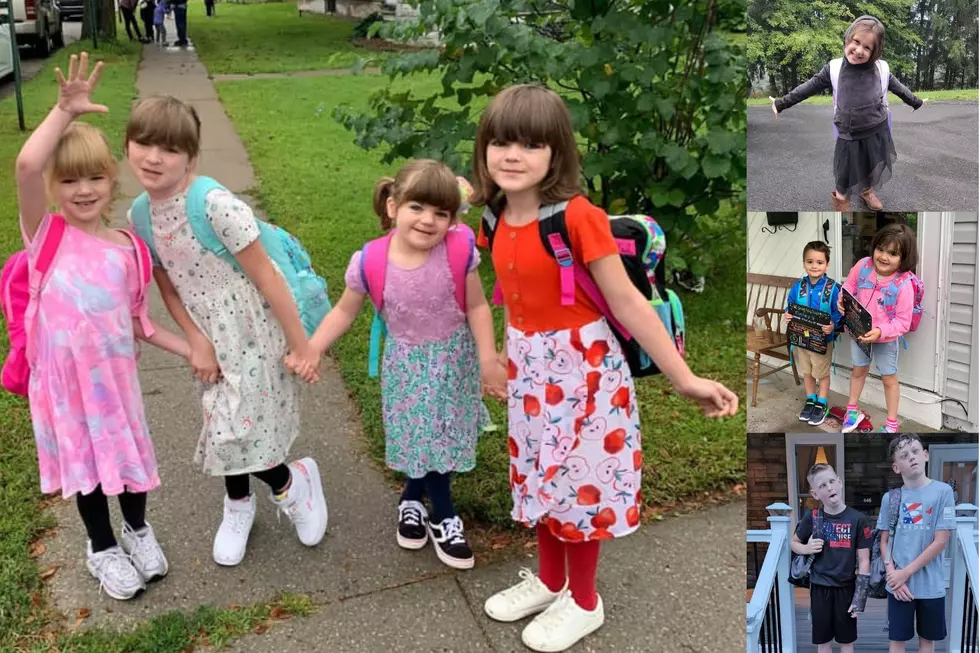
CDC Suggests No Playgrounds, Kids Wear Masks and Eat in Class When Schools Re-Open
When kids return to school in the fall, the CDC has a list schools should consider to keeps students and staff safe, and slow the spread of COVID-19.
Face mask for anyone older than 2
No sharing supplies, tools, toys, games, electronic devices
Desk facing the same way, 6 feet apart
Social distancing on school bus, one child per seat, every other seat empty
One way hallways
No shared spaces like cafeterias or playgrounds
Screens between bathroom sinks
Pre-packaged or bagged food for lunch with kids eating in classrooms
No field trips, assemblies or outside organizations
Limited visitors
Same kids with same staff all day
Staggered arrivals and departures
Daily temperature checks

The changes are suggestions from the CDC, not mandates.
Schools can determine, in collaboration with state and local health officials to the extent possible, whether and how to implement these considerations while adjusting to meet the unique needs and circumstances of the local community.
Schools may consider implementing several different strategies to reduce the spread of COVID-19. Here's what the CDC recommends.
Cloth Face Coverings
- Face coverings may be challenging for students to wear all-day.
- Face coverings should be worn by staff and students, and are most essential in times when physical distancing is difficult.
Shared Objects
- Discourage sharing items that are difficult to clean or disinfect.
- Keep each child’s belongings separated from others’ and in individually labeled containers, cubbies, or areas.
- Ensure adequate supplies to minimize sharing of high touch materials or limit use of supplies and equipment by one group of children at a time and clean and disinfect between use.
- Avoid sharing electronic devices, toys, books, and other games or learning aids.
Modified Layouts
- Space desks at least 6 feet apart.
- Face in the same direction.
- Create distance between children on school buses, one child per row and skip rows when possible.
Physical Barriers and Guides
- Install sneeze guards and partitions, particularly in areas where it is difficult for individuals to remain at least 6 feet apart.
- Place tape on floors or sidewalks and signs on walls, to ensure staff and children remain at least 6 feet apart in lines and guides for creating “one way routes” in hallways.
Communal Spaces
- Close communal shared spaces such as dining halls/cafeterias and playgrounds with shared playground equipment if possible; otherwise, stagger use and clean and disinfect between use.
- Add plastic flexible screens between bathroom sinks.
Food Service
- Have children bring their own meals, or serve individually plated meals in classrooms instead of in a communal dining hall or cafeteria.
- Use disposable utensils and dishes.
- Avoid sharing food and utensils.
Gatherings, Visitors, and Field Trips
- Have virtual group events, or meetings, if possible.
- Limit nonessential visitors, volunteers, and activities involving external groups or organizations as possible.
- Have virtual activities and events in lieu of field trips, student assemblies, special performances, school-wide parent meetings, and spirit nights.
- Pursue options to convene sporting events and participation in sports activities in ways that minimizes the risk of transmission of COVID-19 to players, families, coaches, and communities.
Identifying Small Groups and Keeping Them Together
- Ensure student and staff groupings are as static as possible by having the same group of children stay with the same staff.
- Limit mixing between groups if possible.
Staggered Scheduling
- Stagger arrival and drop-off times.
- Use flexible worksites and flexible work hours to help establish policies and practices for social distancing between employees and others.
For more details on CDC school considerations visit CDC.gov.
READ MORE: 50 resources to help you educate your kids at home
More From 96.9 WOUR









